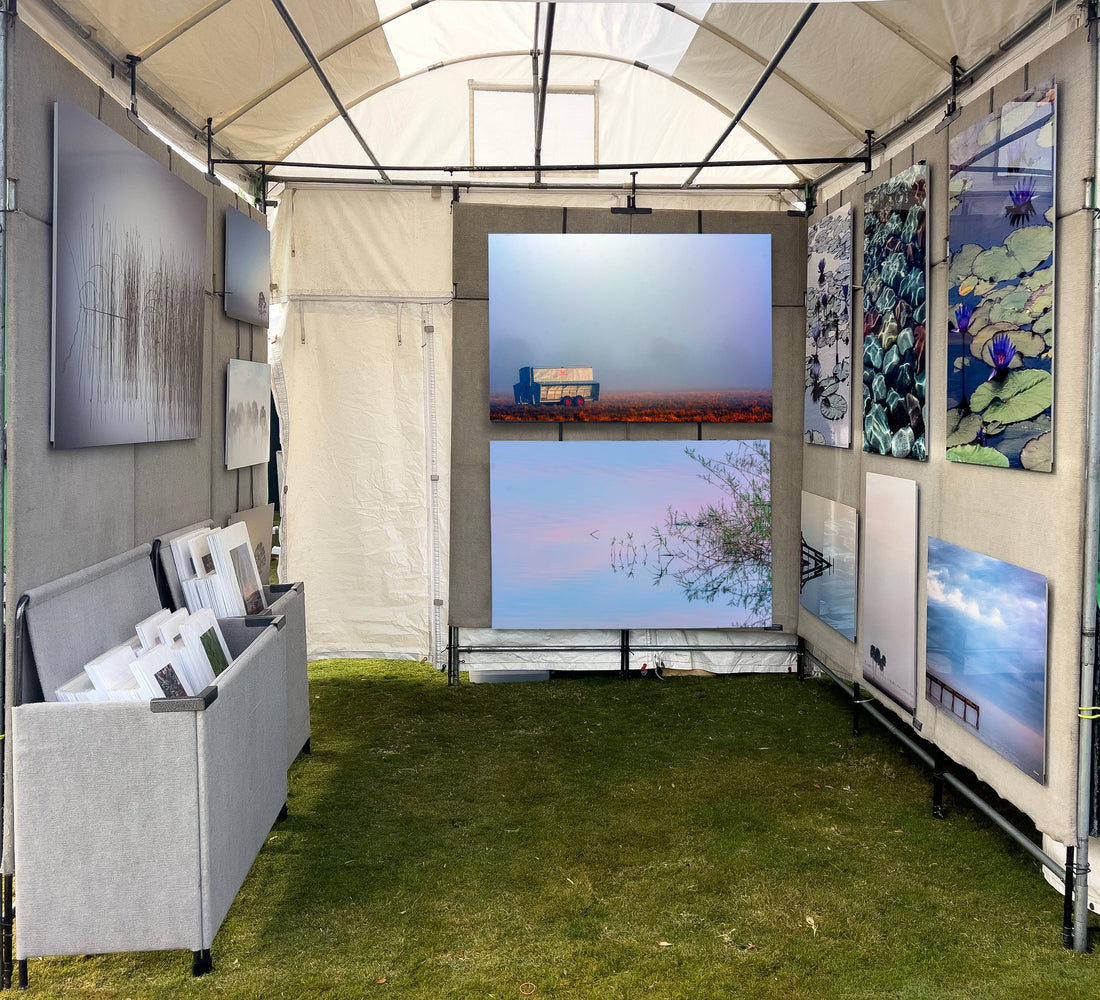
Why I Present My Wall Pieces on Metal at Art Fairs
Share
Why I Present My Wall Pieces on Metal at Art Fairs
A personal reflection on artistic choices, presentation, and responding to assumptions
Over the years, I’ve often been asked, “Why metal prints?”—especially by fellow artists and art fair directors. This is usually followed by, “Are these limited editions if they’re not numbered?” or “Do you make the metal prints yourself?” These questions come with varying degrees of curiosity, skepticism, and at times, unsolicited judgment.
After several months of navigating those conversations (and a few unwelcome comments), I decided it was time to write about my preferred presentation style and why I’ve chosen metal as the final medium for my wall pieces at art shows.
It Starts With the Image
I was taught that the strength of an image and its message always comes first. Presentation enhances it, but even the most intricate and time-consuming printing process won’t elevate a weak image. That’s why I begin every piece with the composition, feeling, and story I want to convey—then choose the best medium to support it.
One of my major photographic influences has always been Pete Turner. His bold use of color, graphic compositions, and ability to merge emotional intensity with precision had a huge impact on how I see and construct an image. Turner’s work reminds me that photography is not just about documentation—it’s about interpretation, mood, and voice. That philosophy carries through in my own approach, especially when I’m deciding how to present a final piece.
Lately, I’ve seen a return to overly complicated printing methods that, in my opinion, sometimes distract from the image rather than serve it. For my work, metal printing offers a clarity and dimensionality that complements the mood I aim to create.
Why Metal Works for My Work
When visitors step into my booth and describe it as “peaceful,” “solitary,” or “calm,” I know they’re connecting with what I intended. These are usually my collectors. Interestingly, they rarely ask about printing techniques. Instead, they respond to how the work feels—the depth, the sense of space, and the subtle 3D effect that metal prints naturally offer.
Metal also supports the visual elements I love to explore: perspective, isolation, and especially, water. I often use a mix of matte and gloss finishes—foggy, dreamlike scenes get a matte treatment, while anything with water receives a gloss layer. This subtle shift creates realism and contrast, which many viewers only notice after spending some time with the image.
How the Metal Prints Are Made
For those curious about the technical side: the process involves reverse printing the image onto transfer paper, then heat-pressing it onto a Chromaluxe metal panel at 350°F for five minutes. After cooling, a metal frame is attached to the back for hanging.
While it’s possible to do this at home, I’d need to convert my entire dining room and negotiate with my four cats—so no, I don’t produce them myself. Instead, I work with a trusted commercial printer who meets my quality standards.
What About Editions and Signatures?
Though I don’t always number my wall pieces, every image is part of a limited edition of 250. I track them through a simple spreadsheet. If someone requests a number, I’ll happily provide it.
In response to repeated discussions (and occasional arguments) about my signature, I’ve moved to signing electronically. Too many people were distracted by signature placement or size. On paper prints, the edition number is on the white border, typically hidden once matted.
Gallery pieces are a different story. These are limited to editions of 25 and are often printed on fine paper and framed under glass—a more traditional presentation, influenced by the F64 school and tailored for collectors who seek exclusivity and long-term value.
The Short Answer
So why do I present my wall art on metal at shows? Because it best supports the emotion, light, and depth I strive to express. It allows the image to speak—clearly and cleanly—without unnecessary noise.
Collectors often don’t need the explanation. They feel it. And that tells me I’ve made the right choice.